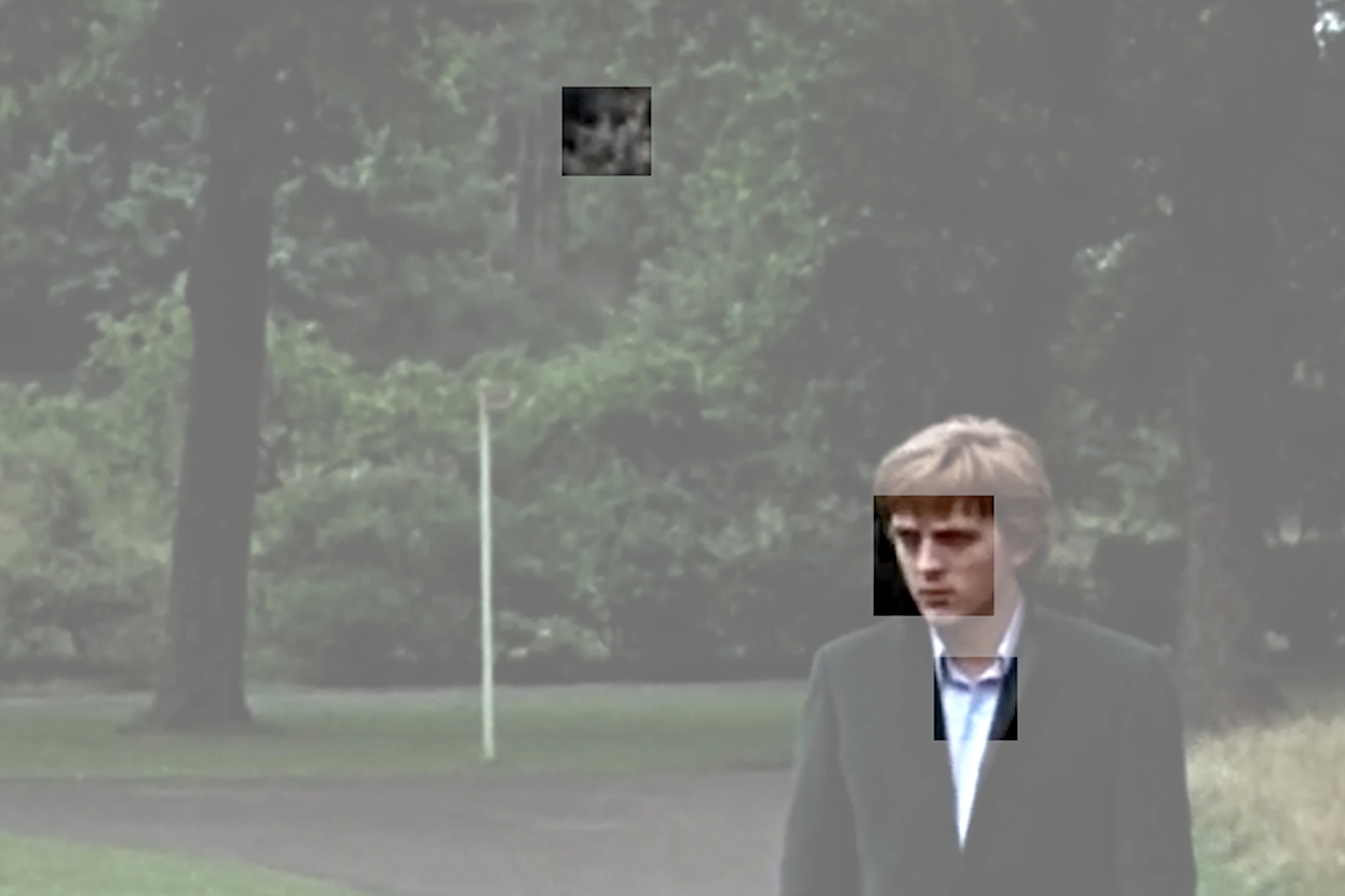Public, Private, Secret—John Houck with Pauline Vermare

Pauline Vermare: Your stunning piece Portrait Landscape (2015) is currently on view at the ICP Museum. Would you describe it to us, and tell us more about its title?
John Houck: I wrote software that uses computer vision to find faces in Michelangelo Antonioni's movie Blow-Up (1966). The software often misrecognizes faces and finds them in a field of grass or in the folds of someone’s clothes, for example. The film is cut down to about ten minutes and only features scenes with the misrecognized faces. I also used editing software to pan and zoom into each face. It has a humorous and haunting effect. The title references two different names for the aspect ratio of pictures and it can also be read literally as a landscape of portraits. Whenever I think of the movie Blow-Up, the image of the lush, green parks around London comes to mind.
PV: You traditionally work with painting and photography. What led you to create custom film-editing and facial-recognition software?
JH: Prior to graduate school I worked as a software engineer for many years and I still program here and there for specific projects in my studio. This project started with an interest in the fact that images and film are now being scanned and “watched” by software agents. Images are now viewed and indexed more by machines than humans.
PV: Portrait Landscape is composed of multiple scenes from Blow-Up and eerily resonates with what Antonioni said at the time: “I’m really questioning the nature of reality…I always mistrust everything which I see, which an image shows me, because I imagine what is beyond it. And what is beyond an image cannot be known.” Why did you choose to work with this film in particular, and how did you select the scenes?
JH: That is a great quote. Antonioni even painted the physical leaves and grass with green paint in the park scenes in Blow-Up, to make the film more vivid. This film came to mind because the main character is not that unlike the autonomous software agents that now scour the Internet, indexing images. He is a kind of automaton, always on the move; he’s constantly snapping photos, leaving abruptly, jumping up and running. The scenes selected themselves in a sense. I had my software make a cut in the film anywhere there was a face recognized in a scene. I then used editing software to go back in and pan and zoom in on the misrecognized faces. So there’s this odd correspondence between my virtually edited camera moves and the ones from the original edit of the film. In the film, the main character is trying to solve a murder he inadvertently photographed, but he keeps zooming into the film and is frustrated that it doesn’t resolve anything. There’s something in the futility of his search that is parallel to the futility of my search for faces in the film.
PV: Your last show at On Stellar Rays, Playing and Reality (2016), dealt in part with the notion of the “analytic third,” extending it to an interstitial third entity between painting and photography. With Portrait Landscape, the third entity resides between the film and the photographs—between one of the most iconic fictions of our times and an unsettling stream of surveillance-like images that look like human faces. The interstitial entity is the invisible, paranoid big brother that you created and who ends up guiding our gaze and subverting our psyche. Would you tell us about the psychological intentions of your work, and of this work in particular?
JH: I wasn’t thinking so much about psychoanalysis or the idea of the “third” when making this video, but the faces were interesting to me because of their emotive quality. They are also something that humans so readily recognize; the slightest suggestion of a face and we project all kinds of emotions on to it. I could have easily trained my software to recognize other objects in each frame, but we don’t as readily project onto a misrecognized banana as a human face. I also didn't intend the film to be as funny as it is. The first time I showed it, people were laughing out loud as they watched it. It felt like finally my interest in comedy had come through in a work and luckily I didn't set out to make a funny piece. Had I intended to make it funny it probably would have felt too on the nose.
PV: The end result is a striking, mesmerizing, and moving piece—surprisingly melancholic. Did you expect this piece to have such an emotional impact on the viewers?
JH: You can never anticipate how something is going to be received, but I know that watching it over and over as I edited it, I certainly felt that haunting quality. It creates that same compulsive feeling we all have when life is lived through the lens of the camera. That obsessive feeling of walking around a city and snapping photos incessantly while knowing that we are continually being photographed, video recorded, and digitally traced.
This interview was originally published on publicprivatesecret.org on October 12, 2016.





